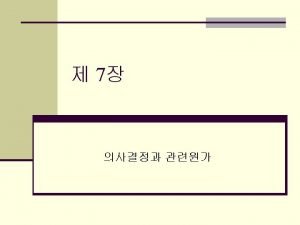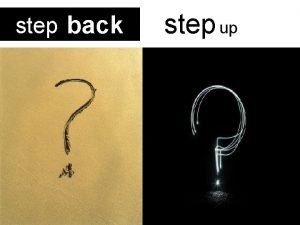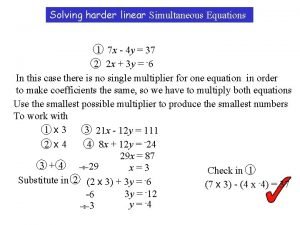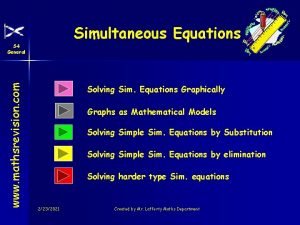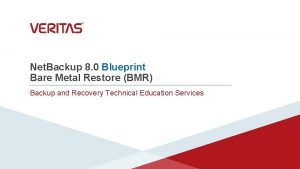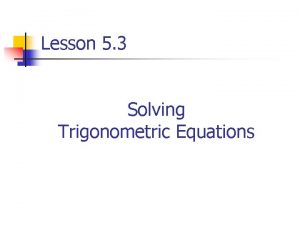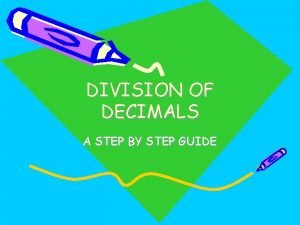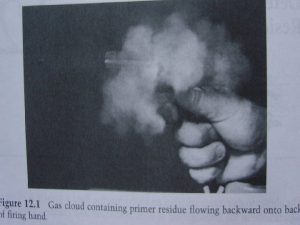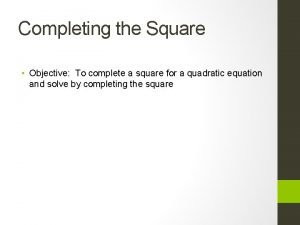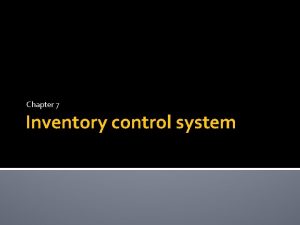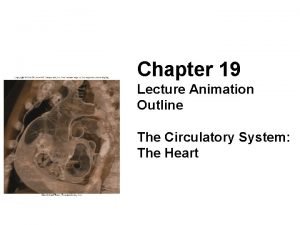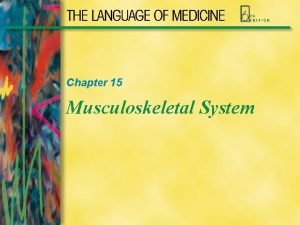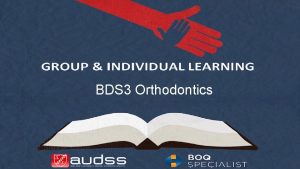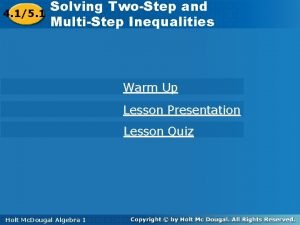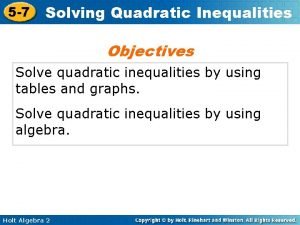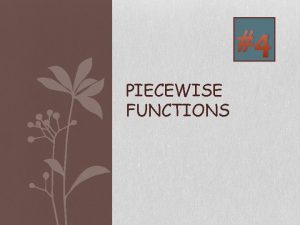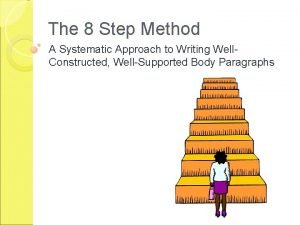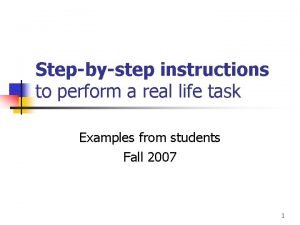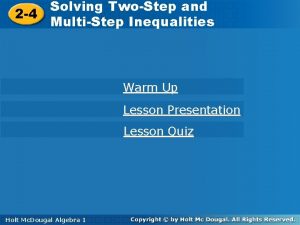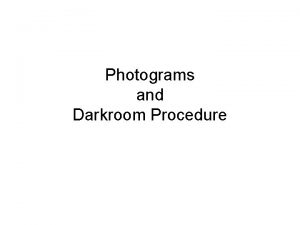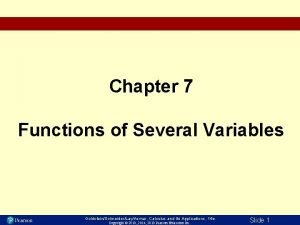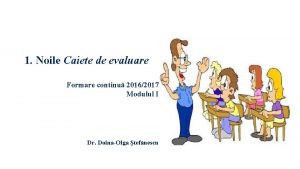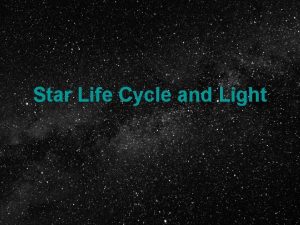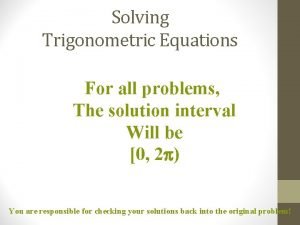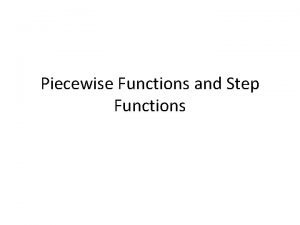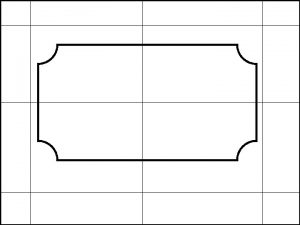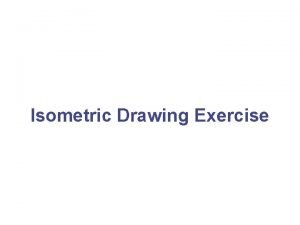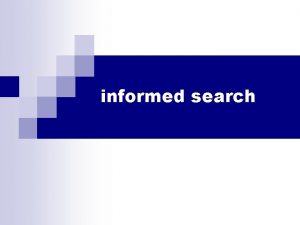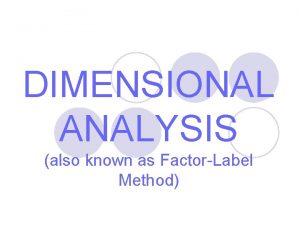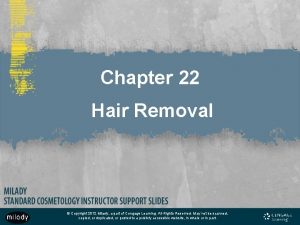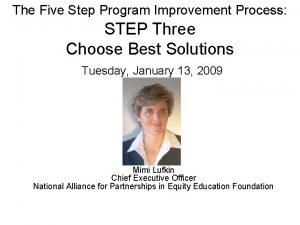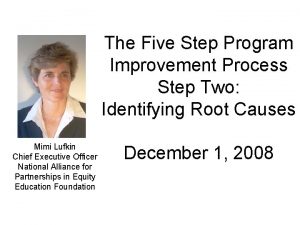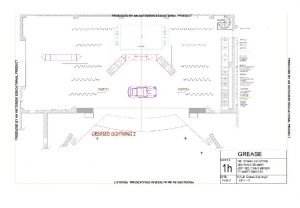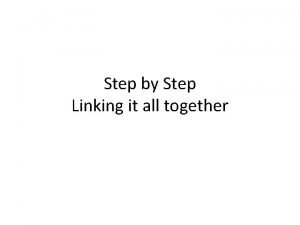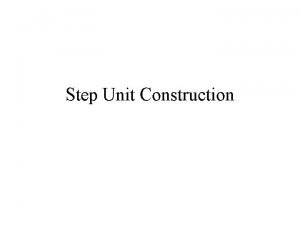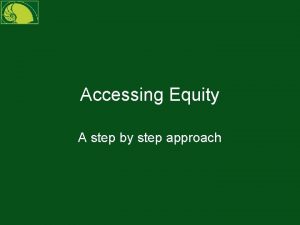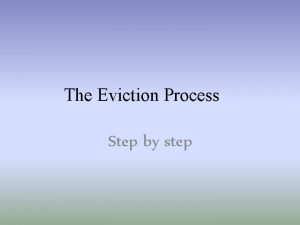Work With Individuals Step Five of the Decision





































































- Slides: 69

Work With Individuals Step Five of the Decision Tree Chapter 12

Direct Practice Work with Individuals • Direct practice with individuals encompasses: Step one: Fiduciary responsibilities Step two: Crisis Intervention Step three: Case management Step four: Individual or case advocacy Step five: Therapy • This chapter (12) guides the practitioner when therapy is the course of action based on the facts of the case.

Therapy Method Choices When the facts of the case at-hand indicate that therapy is the intervention of choice, social work clinicians must still decide which method of therapy is the most appropriate: (1) Step 5: Individual method- worker to one client or dyad (parent/child; couple) (2) Step 6: Family method – worker to one family (3) Step 6: Group method – worker to one group

Therapy Theory Choice • Once a method is chosen, the clinician must then choose a theory-based therapy to enact a therapeutic process. • The determination of best practices requires that the clinician evaluate potential theorybased therapies and the evidence for or against them when deciding upon a specific treatment.

Key Assumptions Best Practices • Competent practice is tied to open assessment and case-specific model building. • Best practices may require the use of more than one method and more than one theory. • Best practices requires that interventions be evidenced-based ( e. g. based on what works) • See case example –Chapter 13

Beginnings Point of Entry • Point of entry refers to the intersect of help seeking and help giving. • A client’s point of entry with a help giver begins with an interview by phone and/or in person. • How a client enters service is pivotal in the conceptualization of the profession and its planned change processes. • Practitioners are defined by their field of practice (area of expertise), public or private auspice and their setting. See chapter three.

The Interview The interview is used for three purposes: 1. To establish rapport or a working relationship with a client 2. To gather information (facts) relevant to the request for service or need for therapy and to arrive at a definition of the problem, its possible causality & the course to be followed for recovery 3. To enact a therapeutic process designed to change feelings, cognitions, attitudes, beliefs, personal or interpersonal functioning (behavior), or some or all of the above.

Historical Perspective The 5 W’s of Social Work The parameters of who receives help for what, where, when, and why (why is there a problem) has driven the conceptualization of direct social work practice since its inception.

1 W- Who is the Client? 1. The person (Richmond, Hollis, Perlman) 2. The environment (Robinson, Reynolds, Smalley) 3. Person-in-the environment (Karls &Wandrei; Germain and Gitterman) 4. The highly vulnerable and poverty stricken individual and the traditional middle-upper class client (Rothman) 5. Population age groups: children, adolescents, adults and the elderly

2 W- What is the Matter 1. Primary and persistent developmental, health, and mental health conditions 2. Persistent problems in social functioning secondary to primary conditions 3. Acute and temporary problems in living; developmental or situational 4. Exposure to extraordinary circumstances 5. Inability to perform normative roles (welfare) or conform to societal rules (criminal justice).

3 W- Where Practice Auspice • • • Public Welfare Agencies Not-for profit agencies For-profit agencies Managed care agencies Faith-based agencies Private Practice

4 W-When • • When there is a need for concrete services When the client feels subjective discomfort and voluntarily seeks help When the client is encouraged to seek help by someone in authority; parent, teacher, employer, spouse. When the client is court-ordered or mandated

5 W- Why Is There a Problem? Proximate and Distal Causality • Proximate time causality: why is the client seeking help now? • Distal time causality: refers to identification of the dynamic forces that created the situation (there and then; past) or that sustain and maintain it (here and now; current).

5 W Type and Number of Problems to be Worked • Nominal definitions refer to the type of problem to be worked; “because of”. . truancy, eviction, suicidal ideation, school failure, job loss, domestic violence, mental illness, parenting problems etc • Number of problems refers to whether the focus of intervention is on a single problem or on multiple problems.

5 W Causality Problem Source and Duration • Problem exploration determines the source of possible causality; social or individual e. g what is the source of the problem? • Problem duration determines whether treatment should be directed at prevention, early intervention, or tertiary (remedial) intervention.

Historical Perspective The Planned Change Process • The profession, whether engaged in direct or indirect social work practice, has used a generic model of a planned change process to describe what it does. • The planned change process consists of five major activities: (1) establishment of rapport, (2) assessment, (3) contracting and goal setting, (4) intervention, (5) evaluation.

Historical Perspective Direct Practice Overtime • • • As individual casework As crisis intervention As case management As case advocacy As individual therapy As family and child welfare services As family therapy As clinical group work As generalist practice

Historical Perspective Conceptualization of Therapy Overtime The therapeutic process has been viewed and conceptualized as: (1) pharmacological (2) crisis intervention (3) psychodynamic; analytic (4) psychodynamic; interpersonal (5) behavioral-learning (6) cognitive-behavioral

Conceptualizations of Therapies Continued (7) solution-focused (8) strengths-based (9) empowerment (10) post modern (11) socialization – conformity to norms This list is not exhaustive.

Conceptualizations of Indirect Practice Overtime • As policy practice • As administrative or management practice; work with organizations • As community practice; inter-group relations • As class advocacy; rights advocacy, organizing • As political social work • As grant writing, fund raising and program evaluation • As generalist practice

Value Base of Clinical Social Work: Core Values • Biestek identified the following as core social work values in direct clinical practice: (1) Confidentiality (2) Self-determination (3) Non-judgmental attitude (4) Acceptance • These were discussed in full in chapter two (the fiduciary model and legal context of direct practice).

Knowledge Of Human Behavior Therapy • Therapists need knowledge of human behavior to enact a therapeutic process. • Each theory of human behavior contains assumptive premises of cause-effect. • Common biological, psychological, and sociological theories of human behavior are described and differentiated in exhibit 12. 1 • Taught and learned knowledge is referred to as declarative knowledge.

Declarative Knowledge Definition • Declarative knowledge begins with a cognitive map of learned (taught) concepts • The declarative knowledge needed to enact a therapeutic process depends on causal knowledge of individual resilience (normality) and vulnerability (abnormality). • Knowing what interferes with the unfolding of resilience leads to practice theories (procedural knowing) about how to prevent or correct missteps

Procedural Knowledge Fresh Client Data • Learned (taught) theoretical concepts are stored in memory as schemas. • When faced with fresh client data, the novice tries to match the facts of the client’s case with the stored knowledge s/he has learned; this is referred to as procedural knowing. • The novice has beginning competency when s/he applies learned concepts to client data e. g. the thinking column in a process recording.

Procedural Knowing Supervision/Mentorship • Reflection on action (thinking) is facilitated by the use of process recordings. • Supervised by a master clinician, the novice (student) advances her/his expertise by using process recordings in supervision. • In contrast, the master clinician engages in tacit knowing.

Tacit Knowing Definition • Tacit knowing relies on highly disciplined and automatic procedural knowledge and on a highly refined self-regulated ability to allow for reflection and adjustment of performance in therapeutic moment. • Tacit knowing is reflection in action in therapeutic moment. • Tacit knowing distinguishes the master clinician from the novice.

Tacit Knowing Improvisation-Creativity • The master clinician can reshape understanding of the situation and depart from established procedures to respond to novel and unexpected conditions. • The master clinician uses tacit knowing to readjust her/his definition of the problem and adjust strategies and tactics accordingly. • Tacit knowing reflects mastery of the art of therapy.

6 Common Factors Procedural Knowing According to Binder (2004) every theory-based therapy has the following 6 factors in common. Each theory-based therapy possesses: (1) some view of personality & interpersonal functioning (though not necessarily the same view). (2) some theory about cognitive, affective, and behavioral processes that are activated (or not) during the process of therapy.

6 Common Factors Continued (3) specific guidance on how to formulate the problem to be worked (4) knowledge of salient maladaptive patterns of behavior and a theory of how change occurs and problems are solved e. g. explanation and change (5) criteria (goals) to track the course of therapy and measure its outcome success (6) strategies for managing therapeutic missteps & therapeutic relationship

Therapeutic Alliance Generic or Common Factors • At a minimum, a therapeutic alliance begins with belief in the helping relationship e. g. belief bonding ( see chapters 4 and 6). • Empathy is a common factor in establishing belief bonding or rapport.

Therapeutic Alliance Theory-Specific • Beyond common factors, therapeutic process of relationship is theory-bound. • The use of self in therapeutic alliance depends on one’s theory of therapy. • Models of talk therapy are based on different theories of how change (the therapeutic process) occurs. • Not all theories of change require the same level of relationship intensity.

Middles Therapeutic Enactment • Intervention is the middle phase of the social work change process. It follows assessment (a theory of what is the matter) and contracting. • Contracting involves worker-client agreement on what is the matter and agreement on the change process (a theory of change). • Therapy involves theory choice and appraisal of the evidence for or against treatment options. • Such options must be evaluated for their cultural relevance.

Theory-Based Therapy Example: Learning Theory • According to this theory, all behavior is learned and can therefore be unlearned. What has not been learned can be taught. • Learning can occur incrementally (shaping) or in large chunks. One can learn through trial and error or vicariously through observation. • There are five schools of thought within learning theory: (1) classical conditioning, (2) operant conditioning, (3) cognitive-behavioral, (4) social learning and (5) stress management e. g relaxation techniques, guided imagery etc.

Example Behavior Modification ABC assessment: A Antecedant events; S=Stimulus cues (Classical conditioning); what triggers the behavior B The behavior, affect, or thought that has been defined as problematic; its frequency; baseline C Consequence- R= responses that increase, decrease or extinguish the behavior; (Operant conditioning; reinforcement).

Behavior-Modification Techniques • Social Learning Theory. The worker models appropriate behavior; client rehearses worker coaches. • Classical conditioning. The worker “unpairs” the S -R. Desensitization. The stimulus cues are changed or the client is taught an incompatible response to the cue i. e. running rather than eating when upset. • Operant conditioning. The worker changes the consequent conditions; uses positive or negative reinforcement. Punishment may be used to extinguish behavior.

Behavior Modification Relationship • Client as his/her own therapist; client can be taught to manage his/her own behavior. Biofeedback, guided imagery & relaxation skills help the client manage the physiology of tension. • Others as therapists; the worker teaches others in the client’s environment how to act as antecedent and consequent events in the client’s life ( parents, teachers, guardians). • See process recording on Kyle in chapter 13.

Theory-Based Therapy Cognitive-Behavioral • In contrast to the time sequence of behavior modification (S-R) cognitive behavioral therapy is perceptual and mediational. • The attributions made about an event are held to explain dysfunctional emotions (anxiety, anger, depression) or behavior. • An individual’s attributions (world views) are learned and can be unlearned • See process recording of Lily in chapter 13.

Cognitive-Behavioral Assessment The ABC paradigm in this model refers to: A Activating event (stimulus) B Belief – an activating event is interpreted by learned core beliefs or by learned distorted cognitions C The affect or behavior that results (consequence) is mediated by the meaning the individual attributes to the event or his/her belief about the event.

Cognitive-Behavioral Techniques • Intervention targets the core beliefs (perceptions) or distorted cognitions of the individual. • Techniques include: (1) keeping an automatic thought record (2) Socratic questioning (3) challenging distorted cognitions by asking for evidence e. g. how do you know that? (4) substituting functional thought patterns for dysfunctional patterns.

Example: Psychodynamic Theory Major Premises • According to this theory all behavior has a purpose but one is not always aware of the purpose of his/her behavior. • Behavior is a product of nature and nurture • Behavior is a product of past & current experiential history. • Behavior is both developmental and interpersonal (self-other). • There are four major psychodynamic schools of thought briefly discussed in this chapter.

4 Psychodynamic Schools of Thought • • • Analytic- Traditional Freudian- Drive Theory Ego Supportive – Problem Solving Relational -Object relations psychology (Mahler) -Interpersonal psychoanalysis (Sullivan) -Self psychology (Kohut) 4. Narrative therapy

Psychodynamic Theory Example: Analytic Therapy Assessment: • Typographical model: Mental activities are conscious, preconscious, and sub or unconscious • Structural model: Personality is composed of the Id, Ego, and Superego. • Drive or Dynamic model: energy is finite and affects development and functioning • Energy is encumbered by impulses (drives). Internal conflict (personality structures) makes energy unavailable for other uses.

Psychodynamic Theory Analytic Therapy: Techniques • Relies on free association, dream analysis, and interpretation of defense mechanism in a therapeutic environment that is capable of keeping the individual safe as the unconscious is made conscious • When the unconscious is made conscious, energy is freed to solve problems, to increase resilience, and to enjoy life.

Psychodynamic Thought Example: Ego Supportive • Assessment focus is on painful or maladaptive behavior caused by: (1) emotional trauma (2) developmental crises (3) situational crises (4) difficulties in social functioning; role performance (5) difficulties in interpersonal relationships • See Process recording on Mrs. Jones in chapter 13.

Psychodynamic Ego Supportive: Techniques • Through empathic responding the worker becomes a powerful significant other to the client in therapy. • Worker acts as a holding environment; the worker acts as an emotional bridge that prevents the client from harming self or others until the client is able to reassert emotional control for him/herself. • Worker lends ego support to help client problem solve until client regains capacity for autonomous problem solving. .

Ego Supportive Techniques Continued • Skills training is a major technique of this model; skills increase competency and mastery of self and one’s environment. • The model builds on and strengthens the coping capacities thereby increasing client resilience and decreasing client vulnerability. • The model is reality focused; interventions target inside and outside realities. It is reflective and action-oriented.

Psychodynamic Thought Example: Relational Paradigms • According to Bordon (2000), the relational paradigm has replaced drive psychology as the central paradigm in contemporary psychodynamic thought. • There are three schools of thought within the relational paradigm: (1) object relations theory, (2) interpersonal psychoanalysis, and (3) self-psychology.

Example: Objects Relations Major Premises • An alternative to drive theory, this theory is based on internalization of interpersonal experience. • Personality is viewed as an outcome of a series of chronologically ordered phases: autistic, symbiotic separation-individuation, and object constancy. • The personality consists of core representations of self, others (objects), and modes of relating (self in relation to other). • Attachment, early care giving, and connection to others are foci of assessment.

Object Relations Major Premises -Continued • The model holds that previous relational conflicts play out in current relationships through repetition compulsion. • Current maladaptive interpersonal functioning is related to earlier emotionally traumatizing relationships.

Object Relations Techniques • Within therapeutic alliance, a triangle forms between the client , an other (a person in the client’s past or current life) and the clinician. • The social work clinician works with transference to correct past failures in relationship in the here and now interactive moment (corrective emotional experience) • Clients experience new ways of being related to and new ways of relating to others in the safety of therapeutic alliance.

Psychodynamic Thought Example: Self Psychology • This model accepts that personality develops because of a primary need for connection. • The model assumes that there has been a failure in empathic response by the client’s primary figures. • Disorders of self are characterized by difficulties in negotiating need, regulating emotion, maintaining self esteem and pursuing meaningful goals • The personality is perceived as living on the border between anxiety and psychoses.

Self Psychology Techniques • Therapeutic actions are based in a “responsive self-object milieu”e. g. therapeutic atunement to the client’s subjective state. • Managing therapeutic relationship is critical in this model; transference and counter-transference

Psychodynamic Thought Example: Interpersonal Therapy • This model holds that personality develops as a consequence of interactive experience in relational fields throughout life. • The motivation to interact is based in the need for satisfaction and security. • Assessment focus is on the problematic aspects of interactions with others.

Example: Interpersonal Therapy Techniques • The clinician is a participant observer in the interactive field of the client; both subject and object. • The clinician uses the interactive moment in session to experience (assess) what is wrong and based on corrective attunement to respond (intervention) in a healing manner. • The clinician is a tool of corrective interpersonal learning and healing.

Psychodynamic Thought Example: Narrative Therapy • According to this model, one’s social context influences how one processes interpersonal interactions; the personal is political. • Unlike other models, this theory allows the worker and client to take into account political, economic, and cultural factors that impact interpersonal interactions. • It is held that the telling of ones’ story reviews experiential history in an attempt to make sense of it.

Example: Narrative Therapy Techniques • The therapeutic alliance is used to facilitate the telling of the client’s story(narrative) • The clinician acts as a co-participant in the client’s effort to review experience, consider alternative views of his/her life, reconstruct meaning and elaborate adaptive life stories. • Therapy challenges the social constructions of others about the client’s story. • New meanings are co-constructed within therapeutic alliance.

Errors and Missteps in Therapeutic Alliance • According to Binder, errors in therapist technique include: (1) misunderstanding of the meaning of client communication or intention, (2) vague communication by therapist to the client, (3) mistimed interventions, (4) failure to recognize the implications of client communication, (5) awkward use of transference interpretation (6) sending mixed messages with implicit hostile meanings,

Errors and Missteps Continued • (7) not being able to identify salient interpersonal themes that should be the focus of work, (8) failure to recognize disguised allusions, and (9) failure to track a central issue consistently and (10) failure to manage transference and countertransference

Transference and Counter-Transference Psychodynamic Theory • From a psychodynamic perspective, relationship is created and recreated by the behaviors engaged in by participants in interactive dialog. • Because the worker-client relationship is grounded in interaction, it is subject to transference. • Managing potential ruptures and missteps in therapeutic alliance due to transference and counter-transference requires that the clinician monitor her/his use of self during therapeutic process.

Managing Transference and Counter- Transference • The clinician monitors her/his use of self through supervision, consultation, and one’s own therapy if warranted. Students monitor their use of self in supervision through the third column of process recordings. • Premise: it is important that the client replay earlier relationships (transference) through therapeutic alliance however, the worker must not replay his/her earlier relationships (countertransference) as to do so would interfere with the helping process.

Therapeutic Missteps Hepworth, Rooney, and Larsen (2002) offer the following list of 14 therapeutic missteps: (1) failing to sense important feelings experienced by the client (2) being inattentive or “tuning out” clients (3) sending messages that clients interpret as criticisms or put-downs (4) failing to acknowledge incremental successes achieved by clients

Therapeutic Missteps-Continued (5) employing inept or poorly timed interpretations or confrontations (6) exhibiting lapses of memory about important information (7) being tardy or canceling appointments (8) appearing fidgety or drowsy (9) disagreeing, arguing, or giving excessive advice (10) taking sides against the client

Therapeutic Missteps-Continued (11) not allowing a client to be an active participant in planning his/her own treatment (12) dominating discussion or frequently interrupting clients (13) failing to recognize client limitations by giving assignments that they cannot carry out. (14) Using power beyond the range of legal mandates

Indicators That Therapeutic Process is Not Going Well Hepworth, Rooney, and Larsen (2002) identify the following 17 client behaviors: (1) mental blocking (2) lengthy periods of silence (3) inattention or mind wandering (4) rambling at length; dwelling on unimportant details (5) restlessness or fidgeting (6) discussing superficialities or irrelevant matters

Indicators-Continued (7) lying or misrepresenting the facts (8) avoiding feelings and problems by focusing on abstract ideas (9) changing the subject (10) forgetting details of a distressing event (11) being tardy, forgetting, changing or canceling appointments (12) minimizing problems or claiming miraculous improvement

Indicators-Continued (13) bringing up important material at the end of the session (14) not paying fees (15) not applying skills or insight gained to daily life (16) assuming a stance of helplessness (17) using verbal ploys to justify not taking corrective actions

Counseling vs. Therapy Is There a Difference? • The terms “counseling” and “therapy” are frequently used to distinguish the BSW from the MSW clinical practitioner. • The BSW graduate and the MSW foundation year student are educational and experiential novices in the art of therapy. • Second year MSW students may(or may not) choose an educational or practice trajectory that will advance their clinical skills.

Counseling vs. Therapy Continued • Clinical social work practitioners continue to be supervised while employed, leading to mastery of the art of therapy. • This is reflected in the type and level of licensing they earn. • Some social work clinicians get advanced clinical training as doctoral students in clinical social work programs or as students in clinical programs staffed by psychologists and psychiatrists. • Accreditation as a skilled Analytic psychotherapist requires additional training.

Examples • See exhibit 12. “Guidelines for Selecting a Theory-based Talk Therapy at the end of the chapter. • See chapter 13 for an explication of a case focused on work with an individual. • See decision schemas 12. “direct practice” and decision schema 12. Therapeutic Process at the end of the chapter.
 Step 1 step 2 step 3 step 4
Step 1 step 2 step 3 step 4 Objectives of decision making
Objectives of decision making Investment decision financing decision dividend decision
Investment decision financing decision dividend decision 5 step decision making process
5 step decision making process Five-step decision-making process cost accounting
Five-step decision-making process cost accounting Early mesial shift
Early mesial shift Dino the dinosaur text structure
Dino the dinosaur text structure How to write an informative essay step by step
How to write an informative essay step by step How to write an argumentative essay step by step
How to write an argumentative essay step by step Step up step back
Step up step back Factor quadratic equations
Factor quadratic equations Linear equation solver with steps
Linear equation solver with steps Simultaneous equations step by step
Simultaneous equations step by step Combine like terms equations
Combine like terms equations The steps of photosynthesis
The steps of photosynthesis Matlab particle filter example
Matlab particle filter example Real application testing
Real application testing Netbackup bare metal restore boot server service
Netbackup bare metal restore boot server service Solving trig equations
Solving trig equations Linda evangelista face shape
Linda evangelista face shape Punnett square step by step
Punnett square step by step How to use viva video
How to use viva video Fusioncompute huawei
Fusioncompute huawei Cosine and sine graph
Cosine and sine graph Steps on how to divide decimals
Steps on how to divide decimals Paraffin test procedure
Paraffin test procedure Equilateral triangle floral arrangement
Equilateral triangle floral arrangement Completing the square purpose
Completing the square purpose Completing the square conics
Completing the square conics Slidetodoc.com
Slidetodoc.com Step-by step inventory process
Step-by step inventory process Kesler science balancing chemical equations
Kesler science balancing chemical equations Steps of blood flow through the heart
Steps of blood flow through the heart Chapter 15 musculoskeletal system
Chapter 15 musculoskeletal system Primate space dental
Primate space dental Fard wudu
Fard wudu How are stars formed step by step?
How are stars formed step by step? Step by step introduction paragraph
Step by step introduction paragraph Phase one denial
Phase one denial Solving two step and multi step inequalities
Solving two step and multi step inequalities It explains how something works step by step
It explains how something works step by step Write all the steps from thread to saree
Write all the steps from thread to saree 6 steps in washing dishes
6 steps in washing dishes How to balance equation in acidic solution
How to balance equation in acidic solution Sap pi abap proxy
Sap pi abap proxy 3-7 quadratic inequalities
3-7 quadratic inequalities Piecewise functions examples
Piecewise functions examples Karim hamdi
Karim hamdi The 8 step method
The 8 step method Step-by-step examples
Step-by-step examples Agenda zilei step by step
Agenda zilei step by step Solving 2 step inequalities
Solving 2 step inequalities Engine disassembly steps
Engine disassembly steps Define photogram
Define photogram Lagrange multiplier calculator step by step
Lagrange multiplier calculator step by step Caiet de evaluare step by step
Caiet de evaluare step by step How to plant a church step by step
How to plant a church step by step Bronchoscopy step by step
Bronchoscopy step by step Life cycle of a star video
Life cycle of a star video Trig equations
Trig equations Complete the swuare formula
Complete the swuare formula Portfolio selection methods
Portfolio selection methods Piecewise step function
Piecewise step function Computer assembly step by step
Computer assembly step by step Draw a compass rose
Draw a compass rose Limerick examples
Limerick examples Isometric exercise drawing
Isometric exercise drawing Step by step romania
Step by step romania Dimensional analysis step by step method
Dimensional analysis step by step method Chapter 22 milady
Chapter 22 milady




